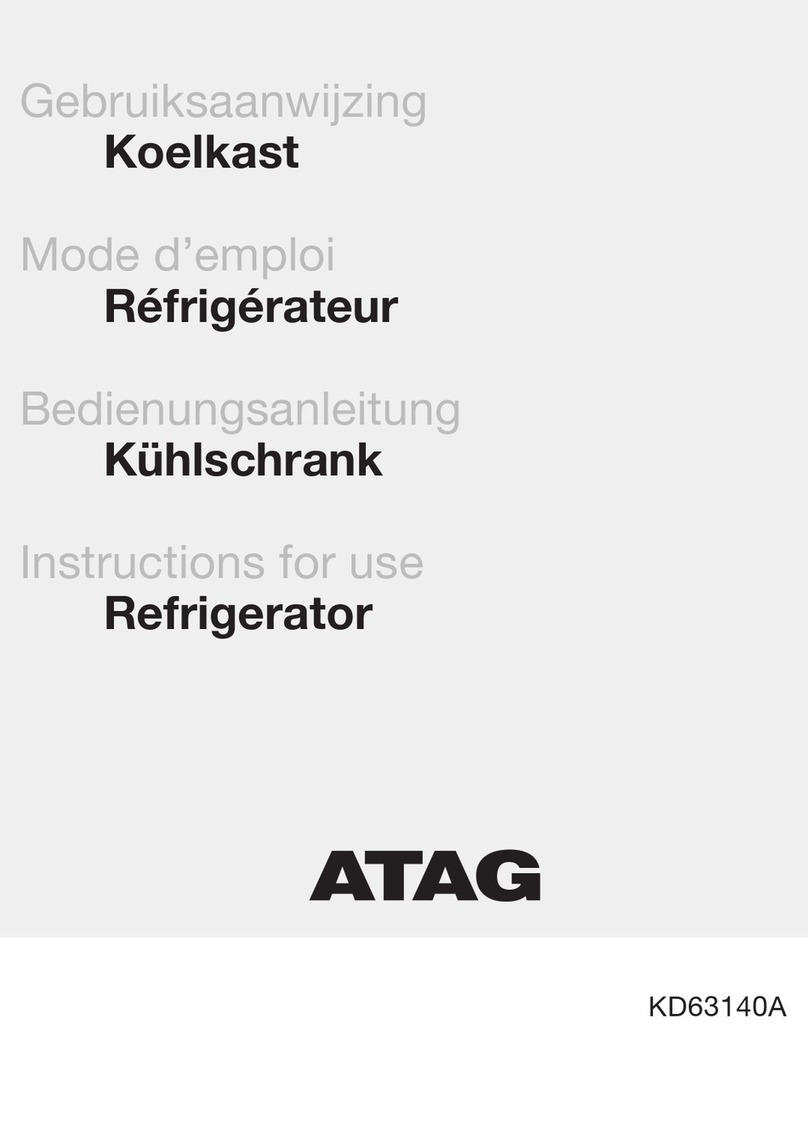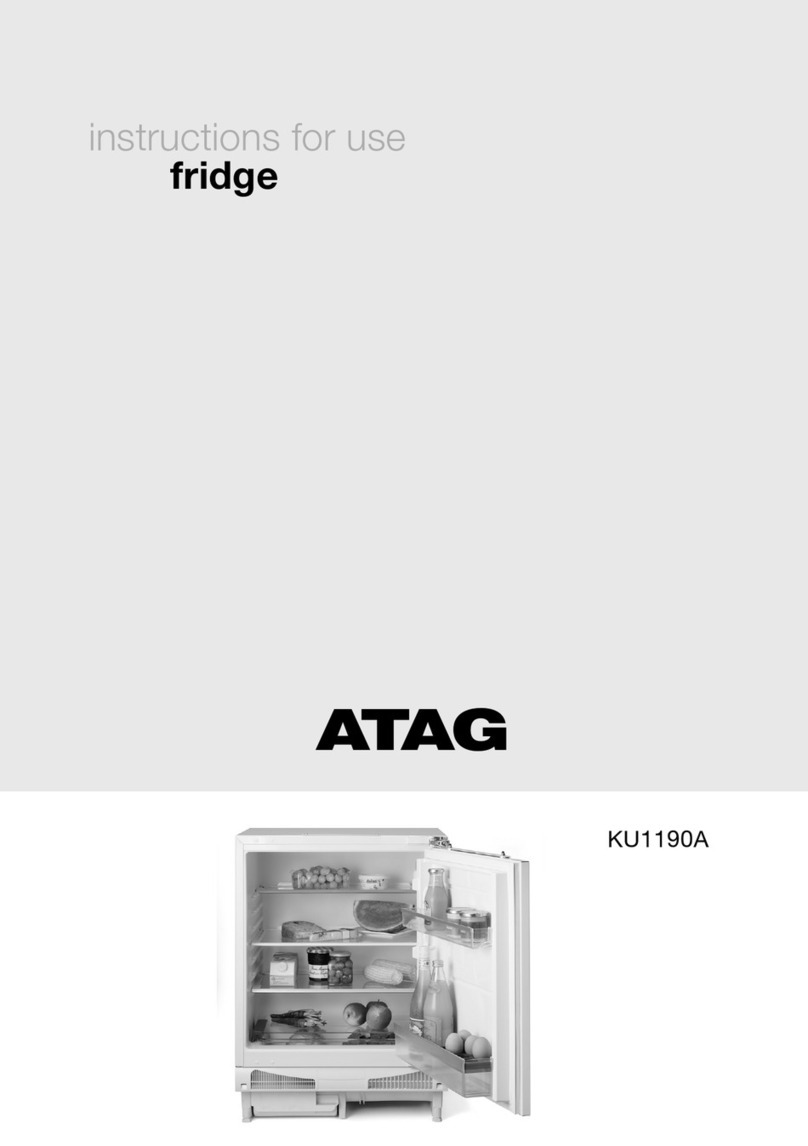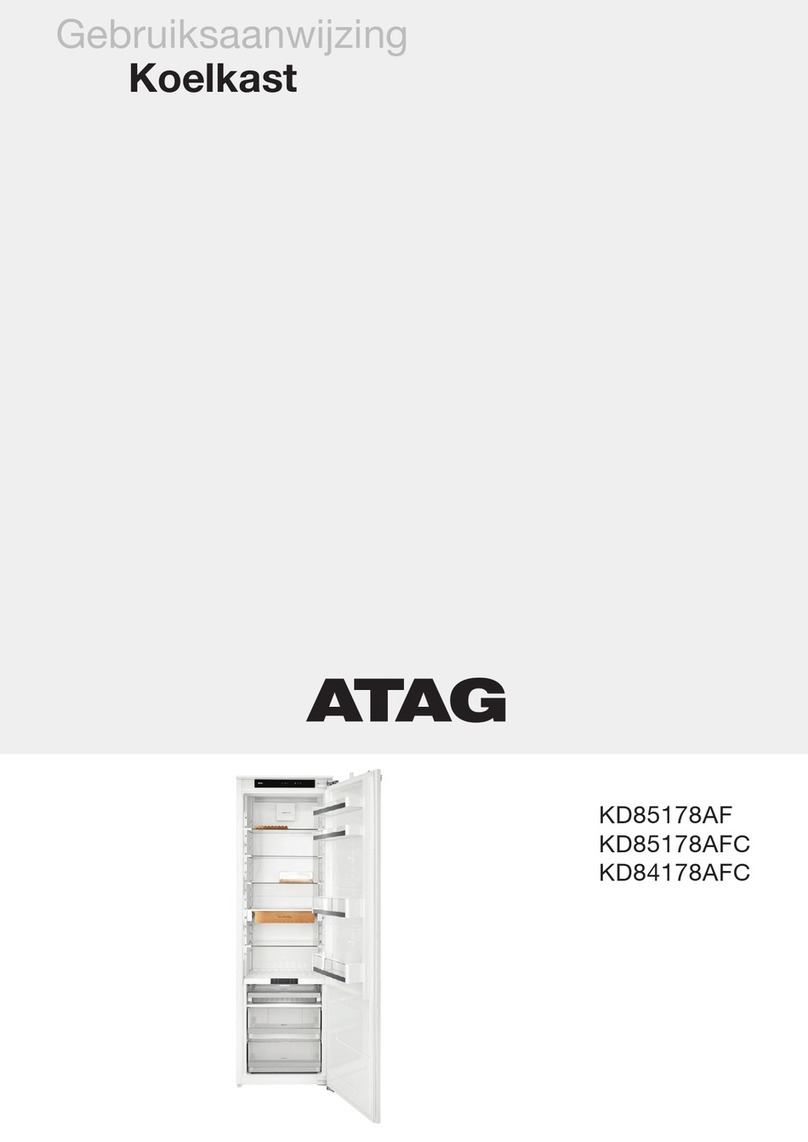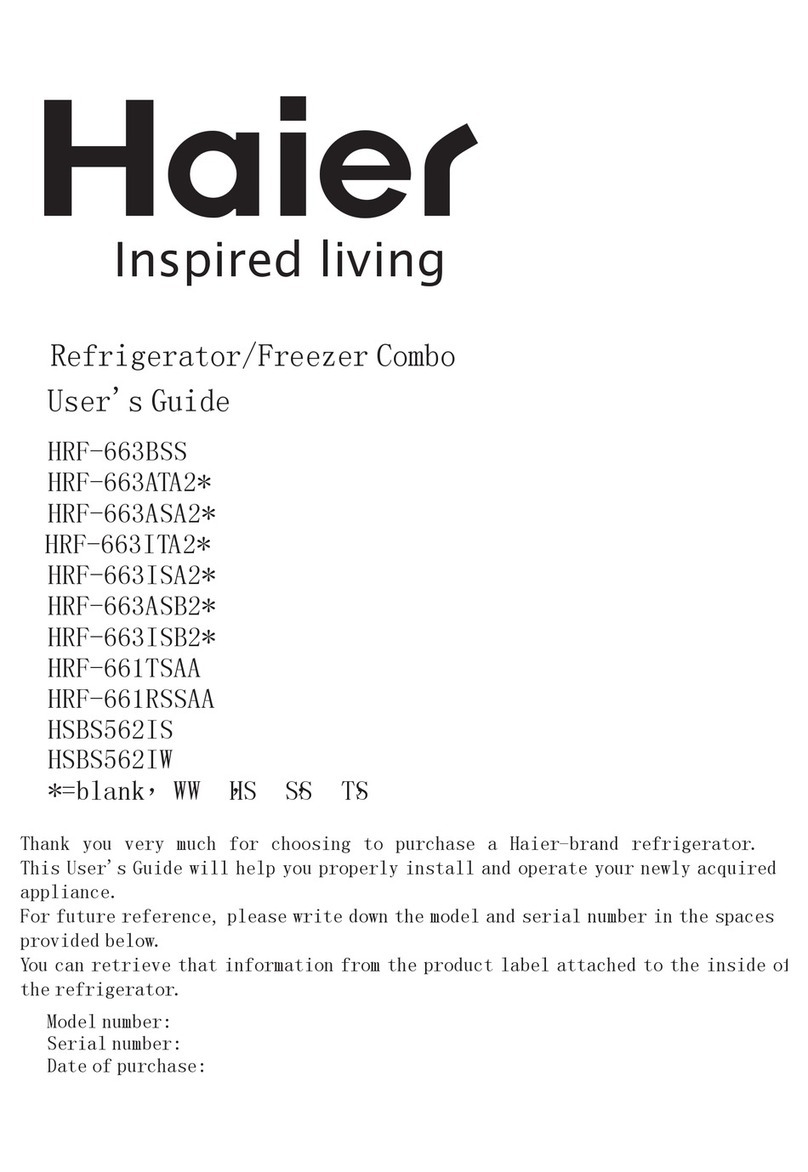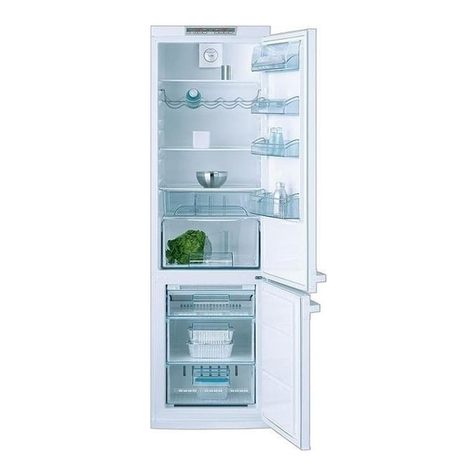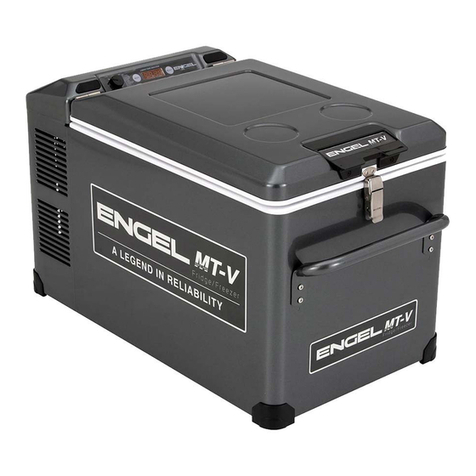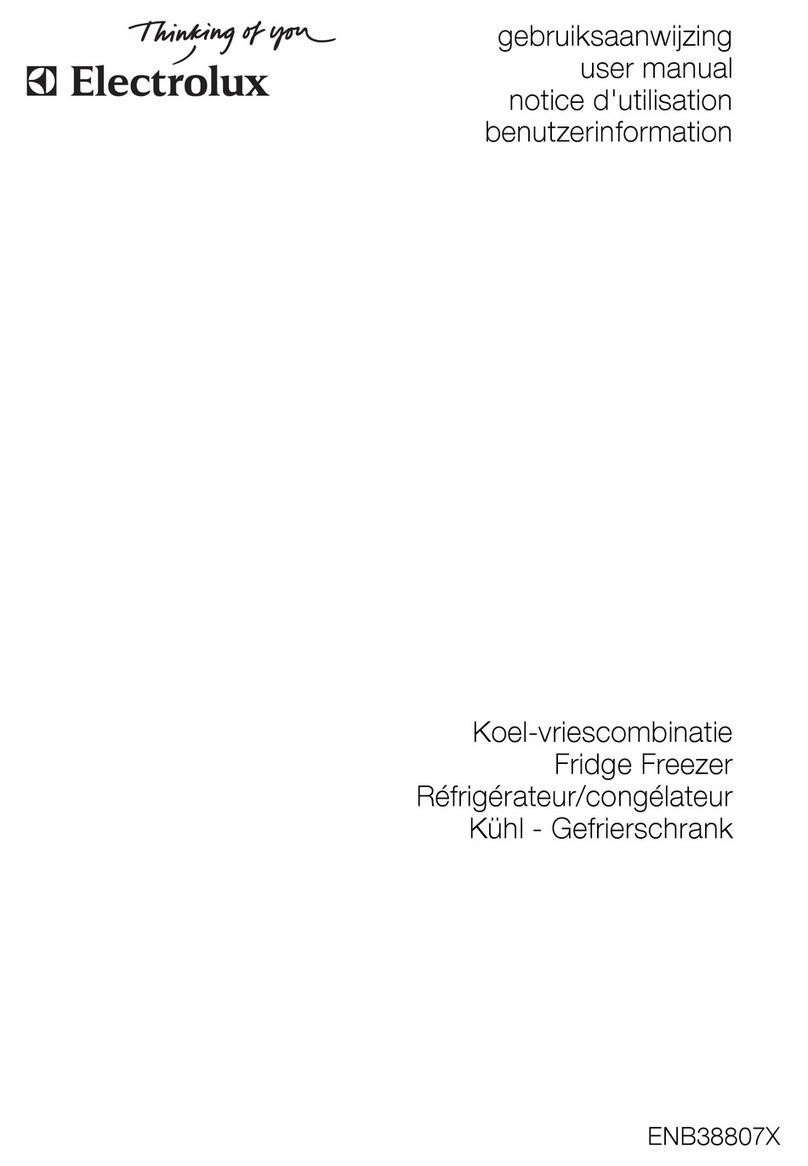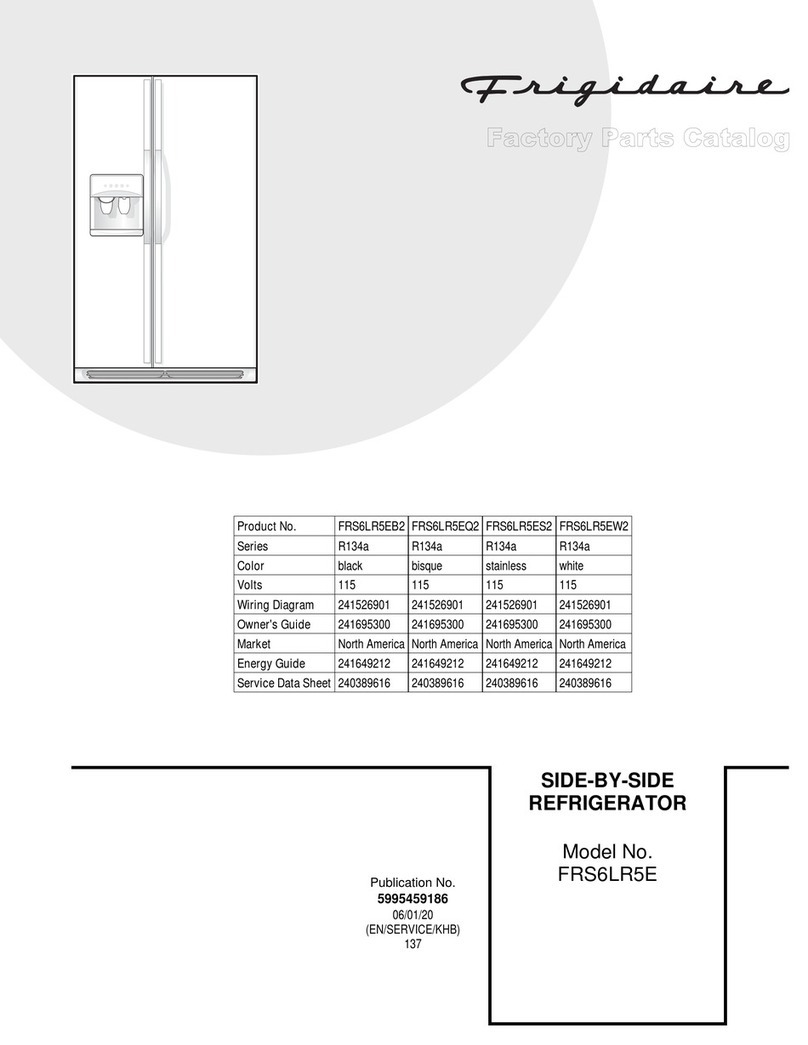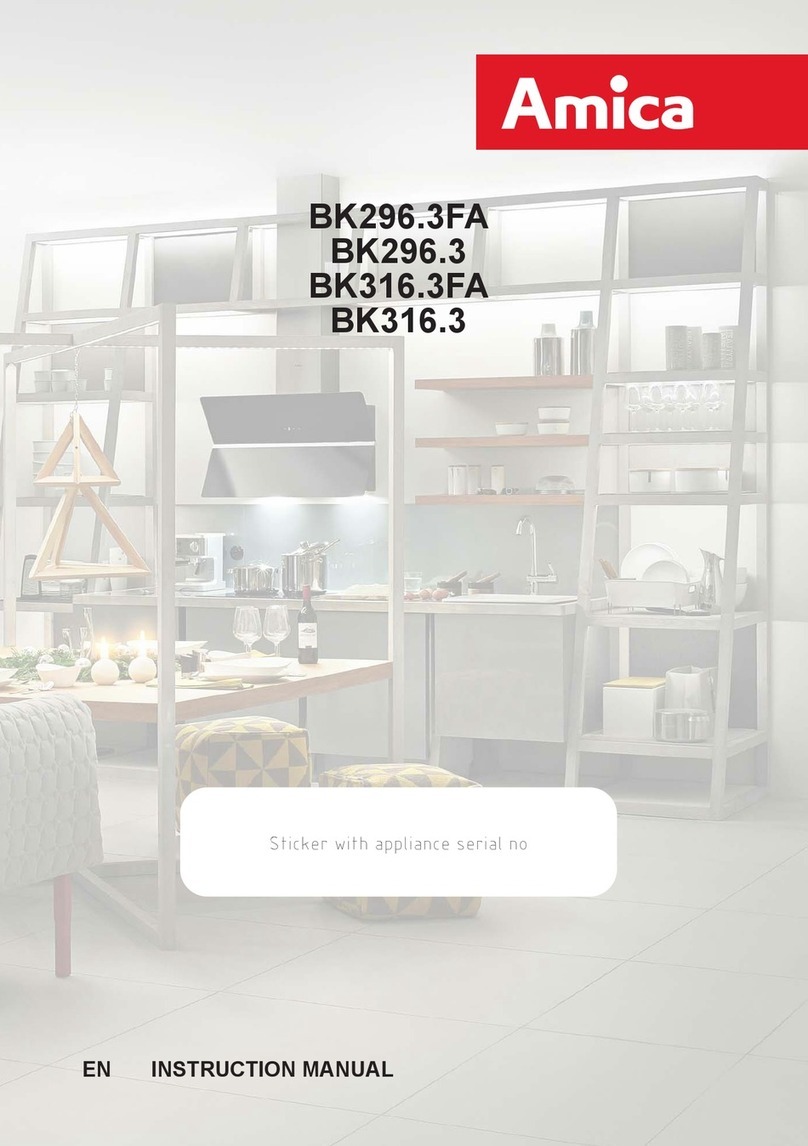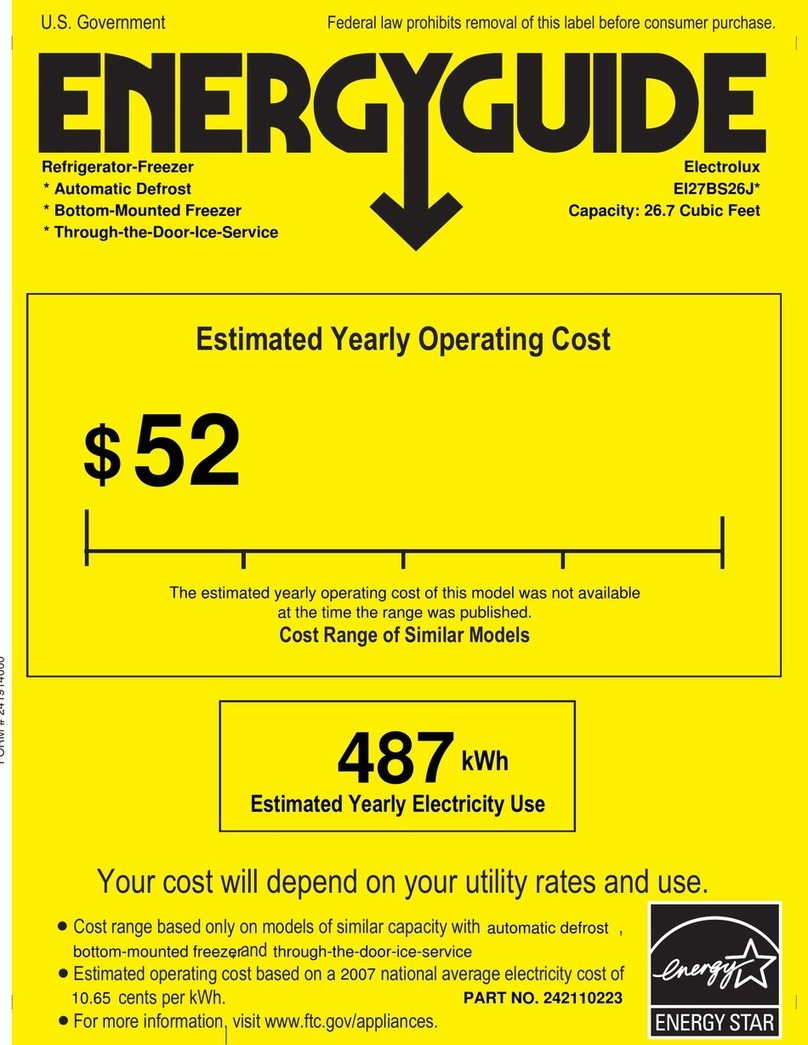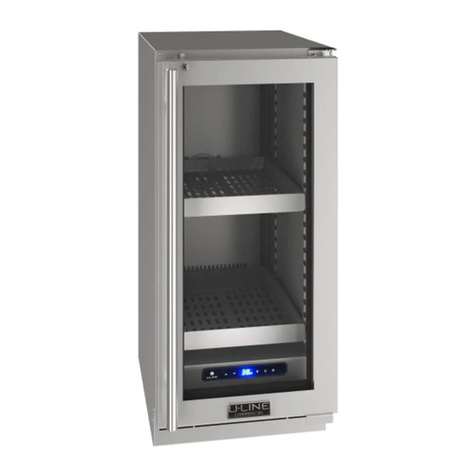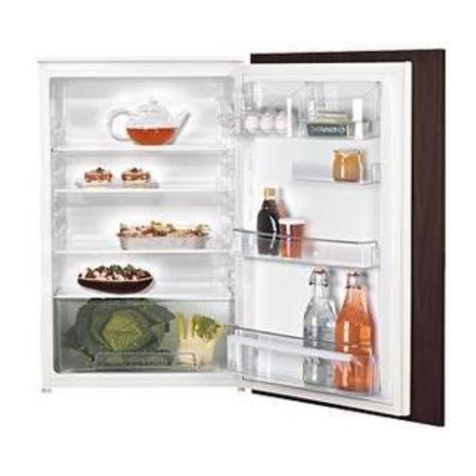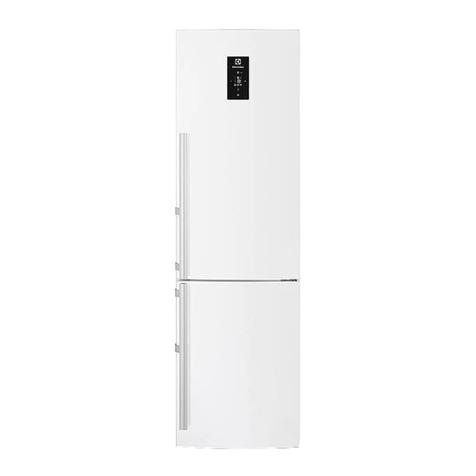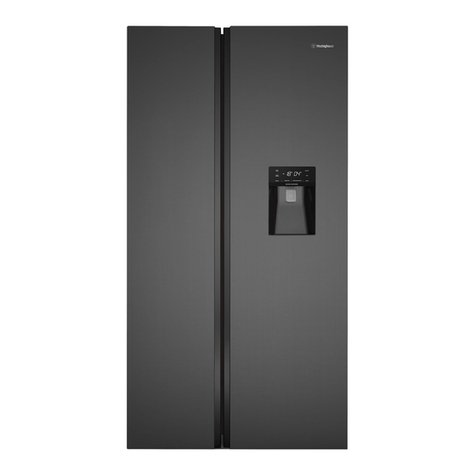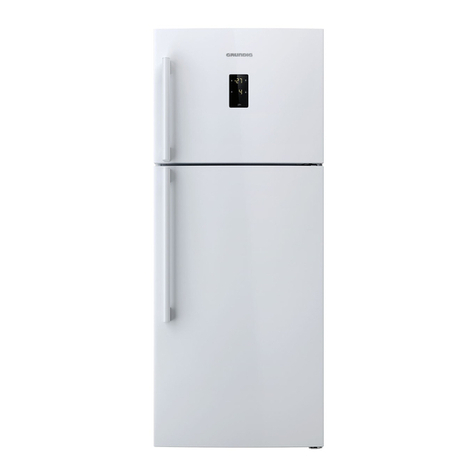Atag KU1090AUU User manual

57
Thank you for your trust and for buying this appliance.
We hope it will successfully serve the purpose for
many years.
Refrigerator is for domestic use only and is intended
for storing fresh foods at the temperature higher than
0°C.
Before Putting Into Use . . . . . . . . . . . . . . . . . . . . 58
Placing and Installation . . . . . . . . . . . . . . . . . . . . 61
Description of the Appliance. . . . . . . . . . . . . . . . . 62
Operation Control . . . . . . . . . . . . . . . . . . . . . . . . 64
Use . . . . . . . . . . . . . . . . . . . . . . . . . . . . . . . . . . 65
Maintenance and Cleaning . . . . . . . . . . . . . . . . . . 67
Trouble-Shooting Guide . . . . . . . . . . . . . . . . . . . . 70
instructions for use
refrigerator

58
· Before connecting the appliance to the mains supply,
leave it stand for about 2 hours, which will reduce a
possibility of malfunctions in the cooling system due
to transport handling.
· Clean the appliance, and be thorough, especially in
the interior (See Cleaning and Maintenance).
· In case the interior accessories are not correctly
placed, rearrange them as described in chapter
"Description of the Appliance".
These instructions for use are intended for the user.
They describe the appliance and its correct and safe
use. They were prepared for various types/models of
refrigerators therefore you might find in it description
of some functions and accesories that your appliance
does not have.
Integrated appliances are equipped with instructions
for mounting the appliance into the kitchen unit.
The appliance should be professionally mounted by
qualified technician and instructions are for his use
only.
· Our appliances are distributed in packaging made of
environmental friendly material which could safely be
recycled, disposed off or destroyed, with no effects
on the nature whatsoever.
· These instructions are printed either on recycled
paper or chlorine free bleached paper.
· When your appliance finally wears out, please try
not to burden the environment with it; call your
nearest authorised service agent. (See Disposing of
the Worn Out Appliance)
instructions for use
before putting into use
we care for the environment
instructions for use
mounting instructions

59
· Try not to open the door too often, especially when
the weather is wet and hot. Once you open the
door, mind to close it as soon as possible. This is
especially important if you have an upright model.
· Check periodically if the appliance is provided with
sufficient cooling (undisturbed circulation of air
through the bottom rail openings).
· Turn the thermostat knob from higher to lower
setting as soon as possible (depends on how loaded
the appliance is, ambient temperature...).
· Before loading the appliance with fresh food, make
sure it was cooled to ambient temperature. (except
for the soup)
· Ice and frost layer increase energy consumption, so
do clean the appliance as soon as the layer is 3-5
mm thick.
· If the gasket is damaged or if it turns out that the
sealing is poor, the energy consumption is
substantially higher. To restore efficiency, replace
the gasket.
· Condenser at the bottom of the appliance must
always be clean and dust free (see Section Cleaning
of the Appliance).
· Always consider instructions stated in sections
Positioning and Energy Saving Tips, otherwise the
energy consumption is substantially higher.
· If you have bought this appliance to replace an old
one equipped with a lock that cannot be opened
from inside (lock, bolt), make sure that the lock is
broken. This will make it impossible for children to
lock themselves inside the appliance and suffocate.
· The appliance must be correctly connected to the
mains supply. (see: Connecting to the Mains Supply).
· If the food has strange smell or color, throw it away,
because it is very likely that it is spoiled and
therefore dangerous to eat.
· Disconnect the appliance from the power supply
before repairing it (only a qualified technician should
instructions for use
before putting into use
tips for energy savings
important

60
repair it), before cleaning and before replacing the
light bulb.
· Do not defrost the appliance with other electric
appliances (as for example with hair dryer) and never
scrape the frost layer with sharp objects. Use only
enclosed tools or tools recommended by the manu
facturer.
· For the sake of environment protection - be careful
not to damage the rear wall of the appliance (the
condenser unit or the tubes - for example when
moving the appliance) or any part of the refrigerating
system inside the appliance. Do not use sharp object
for defrosting the appliance. Use only enclosed tools
or tools recommended by the manufacturer.
· The refrigerating system of the appliance is filled
with refrigerant and oil, so when the appliance is
damaged, handle it with care and dispose it of in
compliance with environmental protecting
precautions. (See We Care for the Environment).
· In the supply cord is damaged, it must be replaced
by the manufacturer or his service agent or a
qualified person in order to avoid hazard.
· The rating plate is inside the appliance or outside on
the rear wall.
The symbol on the product or on its packaging indi-
cates that this product may not be treated as house-
hold waste. Instead it shall be handed over to the
applicable collection point for the recycling of electrical
and electronic equipment. By ensuring this product is
disposed of correctly, you will help prevent potential
negative consequences for the environment and
human health, which could otherwise be caused by
inappropriate waste handling of thisproduct. For more
detailed information about recycling of this product,
please contact your local city office, your household
waste disposal service or the shop where you pur-
chased the product.
instructions for use
before putting into use

61
· When your appliance finally wears out, dispose it of.
If the appliance has a lock, break it, in order to
prevent eventual accidents (danger of children get
locked inside the appliance).
· The refrigerating system of the appliance is filled
with refrigerant and insulating substances which
should be separately treated and processed. Call
your nearest authorised service agent or specialised
servicing centre. If you don't find one, contact your
local authorities or your distributor. Be careful not to
damage the tubes on the rear wall of the appliance
(danger of pollution).
· To avoid pollution of the environment make sure not
to damage the hose at the bottom of the appliance.
disposing of the worn out appliance

62
Place the appliance in a dry and regularly ventilated
room. Allowed ambient temperature depends on the
model (class) of the appliance and is stated on the
rating plate of the appliance.
Never place the appliance near heat emitting devices
(e.g. cooker, radiator, water heater or similar devices)
and do not expose it to direct sunlight.
The appliance should be positioned at least 3 cm away
from the electric or gas cooker and at least 30 cm
away from the oil or coal stove. If this is not possible,
use an appropriate insulation.
Class Ambient temparature
SN (subnormal) from + 10°C to + 32°C
N (normal) from + 16°C to + 32°C
Connect the appliance with the cable and plug to the
power supply socket outlet with a ground terminal
(safety socket).
Required nominal voltage and frequency are indicated
on the rating plate.
The connection to the mains supply and earthing have
to be made according to current standards and
regulations. The appliance resists temporary voltage
tolerance up to - 6 to +6 %.
The appliance is equipped with four adjustable legs, so
that the height may be adjusted from 82 to 90 cm.
The height must be adjusted prior building the
appliance into the opening slot, and it should be set at
such height that the top panel of the appliance fits
exactly below the kitchen worktop (see Mounting
Instructions).
instructions for use
placing and installation
choosing the right place
connection to power cupply
adjusting the height of the appliance

63
Shelf (1)
The shelf may be placed randomly upon any of the
guide slots within the interior of the appliance. It is
protected against sliding out.
The shelf is placed upon the top four guides by
lowering the front section of the shelf downwards, the
rear of the shelf is placed upon the guide slot and the
shelf is inserted in the guide in the inclined position.
The shelf is placed upon the top four guides by lifting
the front section of the shelf upwards, the rear of the
shelf is placed upon the guide slot and the shelf is
inserted in the guide in the inclined position.
In case you may wish to remove the shelf from the
appliance lift the shelf by hand at the rear and pull it
out in the opposite procedure.
Glass shelves are protected with plastic edge frames.
Quickly perishable food should be stored on the back
i.e. the coldest part of the shelves.
instructions for use
description of the appliance

64
Defrost Water Outlet (2)
The interior of the refrigerator is cooled with cooling
plate incorporated in the rear wall. Under the plate
there is a channel and an outlet for defrost water.
Regularly check the defrost water outlet and the
channel, because they should never be clogged (as for
example with food rests). If clogged, use a plastic
straw and clean it.
Crisp tray and serving tray (3)
The tray at the bottom of the refrigerator is covered
with the serving tray. This cover protects the stored
fruit and vegetables from excessive drying.
Door Liner
The door liner consists of various shelves or holders
used for storing eggs, cheese, butter and yogurt as
well as other smaller packages, tubes, cans etc.
The lower shelf is used for storing bottles.
Illumination in the Interior of the Refrigerator
The light for illuminating the interior of the appliance is
on, when the door is opened. The operation of the
light does not depend on the position of the thermo-
stat knob.
instructions for use
description of the appliance

65
The appliance is controlled with thermostat knob,
situated in the right upper part inside the appliance.
Turn the knob from STOP (0) position towards 7and
backwards.
· Higher settings on the knob (towards 7) mean lower
temperatures (colder) in all three compartments of
the appliance. Temperature in the interior of the
appliance may even drop below 0°C. Higher settings
should be used only in case higher temperature is
recommended or required.
When the ambient temperature is normal, we
recommend medium setting.
· Changes of the ambient temprature affect
temperature in the interior of the appliance (choose
correct setting of the thermostat knob).
· In STOP (0) position the appliance does not operate
(the cooling system is switched off), yet power
supply is not interrupted (the light is on, when you
open the refrigerator door).
· Temperature in the refrigerator also depends on how
often the door is opened.
instructions for use
operation control
temperature selection

66
Proper use of the appliance, adequately packed food,
correct temperature and taking into account hygienic
precautions will substantially influence the quality of
the food stored.
· Foods to be stored in the refrigerator should be
properly packed as to prevent mixing various
moisture degrees and odors (in polyethylene bags or
sheet, aluminium foil, wax paper, or stored in
covered containers or bottles).
· Before storing food in the refrigerator, remove the
excessive packaging (like yoghurt in multi-package).
· Pack systematically and make sure that foodstuffs
do not touch each other (various odours may mix).
Assure adequate air circulation around packages.
· Never store inflammable, volatile or explosive
substances.
· Beverages with high alcohol percentage should be
stored in tightly sealed bottles in vertical position.
· Food should not touch the rear wall of the
refrigerator!
· Foods should be cooled down before storing.
· Crispy and delicate foods should be stored in the
coldest parts of the refrigerator.
· Try not to open the door too often.
· Set the thermostat to the setting where lowest
temperatures are reached. Set the thermostat
gradually as to avoid freezing of the foods.
Use a thermometer and measure the temperature in
the individual compartments. Place the thermostat in
a glass vessel filled with water. Temperature
readings are most reliable few hour after steady
state is reached.
· Some organic solutions like volatile oils in lemon or
orange peel, acid in butter etc. could cause damage
and when in contact with plastic surfaces or gaskets
for longer period of time they can even cause
accelerated ageing of the plastic material.
· Unpleasant odor inside the refrigerator is a sign that
something is wrong with foods or that your
refrigerator needs cleaning. Unpleasant odor can be
eliminated or reduced by washing the interior of the
refrigerator with a mild solution of water and
instructions for use
use
storing fresh foods

67
vinegar.
We also recommend using activated carbon filters to
clean the air or to neutralize odors.
· If you plan a longer journey, make sure to remove
quickly perishable articles of food out of the
appliance before you leave.
Fresh Food Storage Time in the Refrigerator
Legend: + reccomended storage time
= possible storage time
instructions for use
use

68
The refrigerator requires no defrosting, since the ice at
the rear wall melts automatically. Ice, formed at the
rear end during the operation of the compressor, melts
when the compressor is off, and water drops slide
downwards through the hole in the rear wall o the
condenser collecting receptacle, placed at the bottom
of the appliance.
Disconnect the power supply before cleaning the
appliance.
Do not use coarse or aggressive cleaning agents as
you can damage the surface.
· Clean the exterior with water and detergent.
· Remove the detachable accesories in the interior of
the appliance and clean it with water and liquid
detergent. Plastic parts cannot be washed in
washing machine.
· Wash the interior of the appliance with lukewarm
water, in which you added one or two spoonfuls of
vinegar.
· The air openings in the bottom rail should be cleaned
or vacuumed periodically.
Dust from the condenser should be vacuumed in the
followingmanner:
- push the finger through the opening in the bottom
rail and release the fastener;
- pull the rail towards you and remove it;
- remove the bottom board of the kitchen cabinet
- pull the condenser dish out;
- use the vacuum cleaner to clean the dust from the
condenser;
- replace the condenser dish and the bottom rail in the
opposite order.
After cleaning, connect the appliance to power supply
and reload it.
instructions for use
maintenance and cleaning
automatic defrosting of the refrigerator
cleaning the appliance
cleaning of the condenser

69
In order to optimize the operation of the appliance and
save energy, it is recommended to clean periodically
the dust from the condenser at the back of the appli-
ance.
Disconnect the appliance from the mains prior the
commencement of cleaning!
· Empty the contents of the appliance.
· Remove the supporting panel from the bottom of the
kitchen cabinet.
· Remove the screws fixing the appliance to the
kitchen worktop.
· Pull the appliance out and expose the condenser at
the back of the appliance.
· Unscrew the screws from the condenser bonnet and
remove the bonnet.
· Clean the dust and dirt from the condenser.
After cleaning return the appliance to its place, plug in
the mains power cord and fill with food.
instructions for use
maintenance and cleaning
periodical cleaning of the condenser

70
If you do not intend to use the appliance for a longer
period, set the thermostat knob to the STOP (0)
position, disconnect the power supply, take out the
foods and defrost and clean the appliance. Leave the
door slightly open.
instructions for use
maintenance and cleaning
switch off the appliance when not in use

71
During the service, you can come across some
troubles that in most cases result from improper
handling of the appliance and can easy be eliminated.
· Check the supply in the outlet socket and make sure
the appliance is switched on (thermostat knob in
operating position).
· The door was frequently opened or it was left
opened for too long.
· The door is not properly closed (the door may sag,
the gasket may be polluted or damaged).
· Perhaps you have overloaded the appliance with
fresh foods.
· Insufficient cooling of compressor and condenser.
· Check the air circulation through the bottom rail
openings and if necessary clean or vacuum the dust
from the condenser. See Section Cleaning and
Maintenance.
Until the water is drained through the hole in the rear and
into the receptacle at the bottom of the appliance, normal
automatic defrosting of the appliance is guaranteed.
In case the ice formation on the inner back wall is
increased (3-5 mm), ice should be manually defrosted.
Set the thermostat knob to STOP (0) position and
leave the door open. Never use electric devices for
defrosting and do not scrape the ice or frost layer with
sharp objects.
After completed defrosting, turn the knob to desired
position and close the refrigerator door.
The cause of increased ice formation may be one of
the following:
- the door does not seal well (clean the gasket if it is
contaminated, or replace it if it is damaged);
- the door was frequently opened or it was left opened
instructions for use
trouble-shooting guide
the appliance fails to operate after connecting to the
mains supply
continuous operation of the cooling system
ice formation on the inner rear wall

72
for too long;
- the food stored in the refrigerator was warm;
- the food or dish is touching the inner back wall.
The excessive dust upon the condenser is signaled by
the sound alarm, heard at each opening of the
appliance door – until the default is removed.
Check the air circulation through the bottom rail open-
ings and if necessary clean or vacuum the dust from
the condenser. See Section Cleaning and Maintenance.
Water leaks from the refrigerator if the drain hole is
clogged, or if the water drips past the collection gutter.
· Clean the clogged outlet, for example with a plastic
straw.
· Manually defrost the increased ice layer. See "Ice
Formation onthe Inner Rear Wall".
Cooling in refrigerating-freezing appliances is enabled
by the cooling system with compressor, which
produces noise. How noisy the appliance is depends
on where it is placed, how it is used and how old the
appliance is.
· During the operation of the compressor the noise of
liquid is heard and when the compressor is not
operating, the refrigerant flow is heard. This is a
instructions for use
trouble-shooting guide
sound alarm
noise
water drains into the bottom compartment of the appliance

73
normal condition and it has no influence whatsoever
on the lifetime of the appliance.
· After starting the appliance, the operation of the
compressor and the refrigerant flow may be louder,
which does not mean that something is wrong with
the appliance and it has no influence on the lifetime
of the appliance. Gradually the noise is reduced.
· Sometimes unusual and stronger noise is heard,
which is rather unusual for the appliance. This noise
is often a consequence of inadequate placing.
- The appliance shall be placed and levelled firmly on
solid base.
- It should not touch the wall or kitchen units standing
next to it.
- Check the accesories in the interior of the appliance,
they should be placed correctly in their positions;
also check the bottles, tins and other vessels that
might touch each other and rattle.
Before replacing the light bulb, disconnect the
appliance form the power supply. Press the cover at
the rear side (in the arrow 1 direction) and remove the
plastic cover (in the arrow 2 direction). Replace the
bulb with a new one (E14, max. 15 W). Don't forget:
the old bulb does not belong to organic waste.
Light bulb is consuming good therefore our in-guaran-
tee service does not relate to it.
WE RESERVE THE RIGHT TO ALTER THE SPECIFICA-
TIONS WITH NO INFLUENCE ON THE OPERATION OF
THE APPLIANCE.
instructions for use
trouble-shooting guide
bulb replacement

KU1090AUU
gebruiksaanwijzing
koelkast
notice d'utilisation
réfrigérateur
gebrauchsanweisung
kühlschrank
instructions for use
refrigerator

gba 44.01.30.000050/t92120B
postbus 1033 - 6920 BA - Duiven 142027 (12-08)
Table of contents
Other Atag Refrigerator manuals

Atag
Atag KS33178D User manual
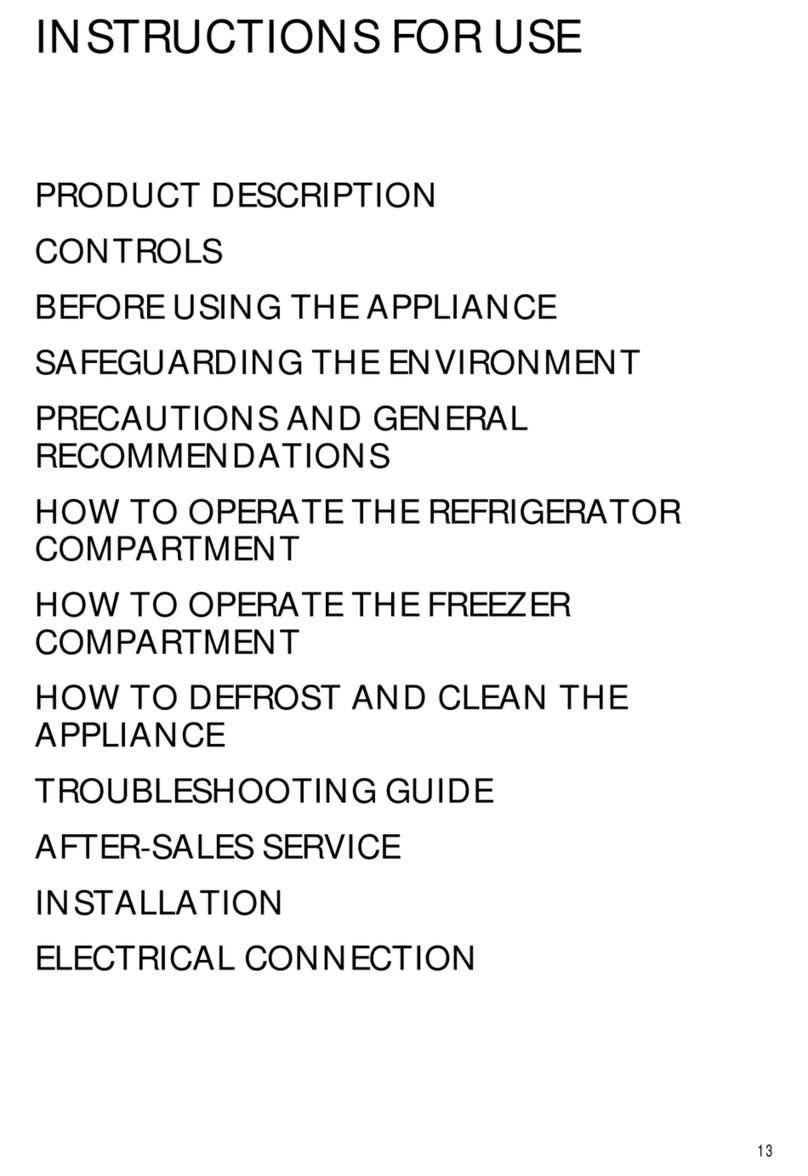
Atag
Atag KS30122BUU/A03 User manual
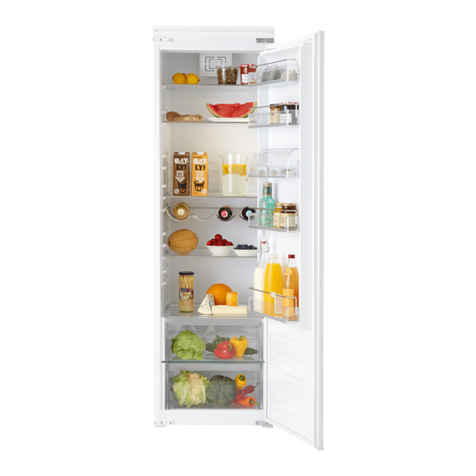
Atag
Atag KS2178A User manual
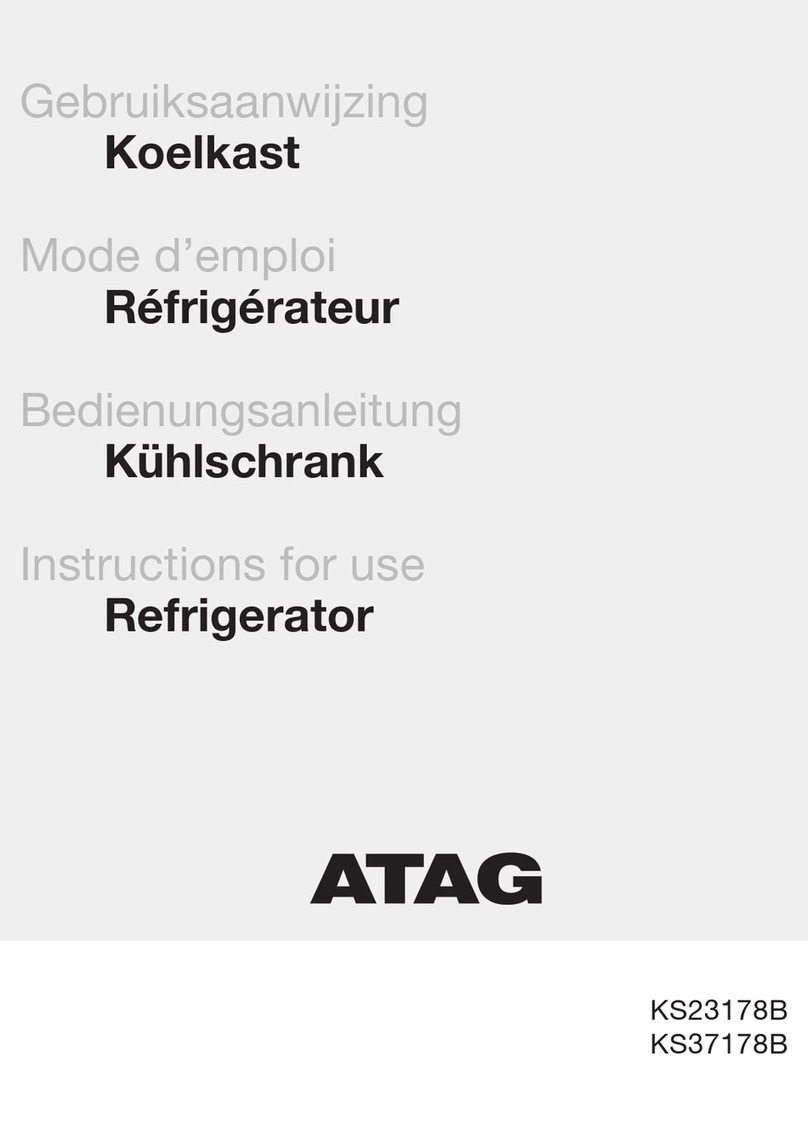
Atag
Atag KS37178B User manual

Atag
Atag KD62194B/A01 User manual
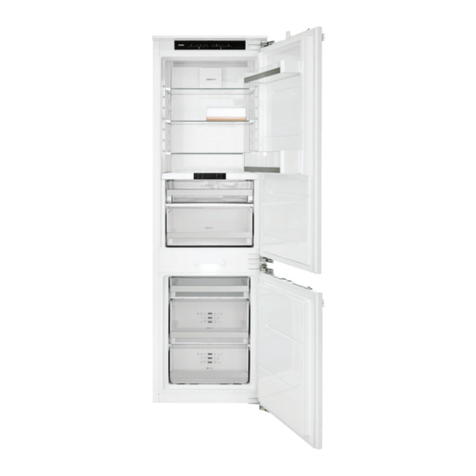
Atag
Atag KD84178BF User manual
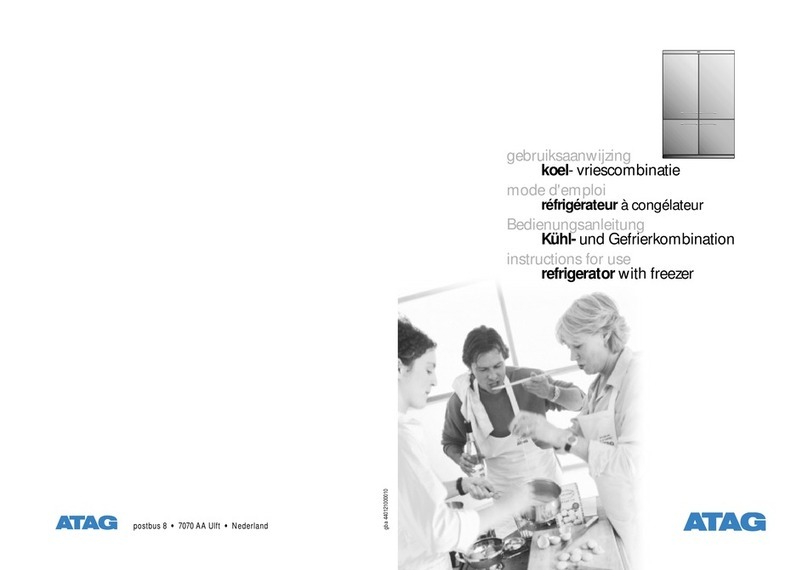
Atag
Atag KB311M User manual
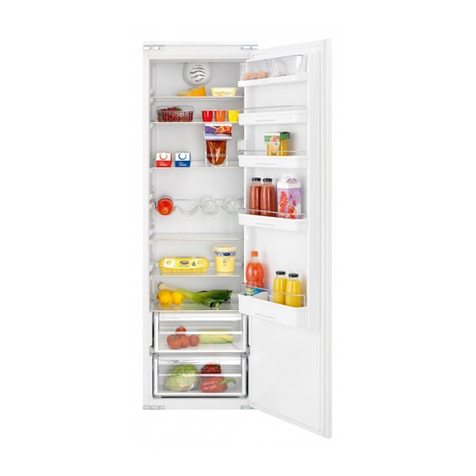
Atag
Atag KD2178AUU/A02 User manual

Atag
Atag KD85122AF User manual

Atag
Atag KD26178A User manual
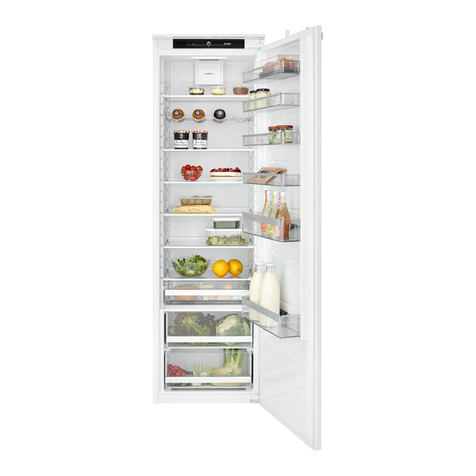
Atag
Atag KS24178A User manual
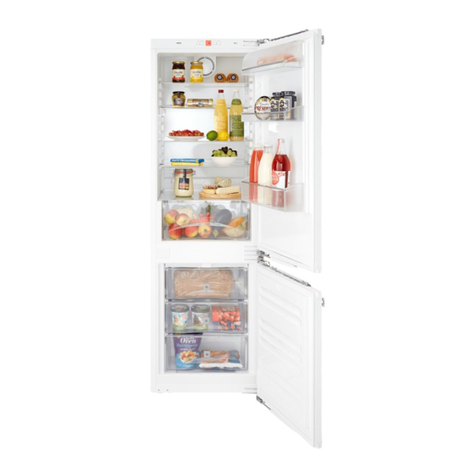
Atag
Atag KD80178BDN User manual
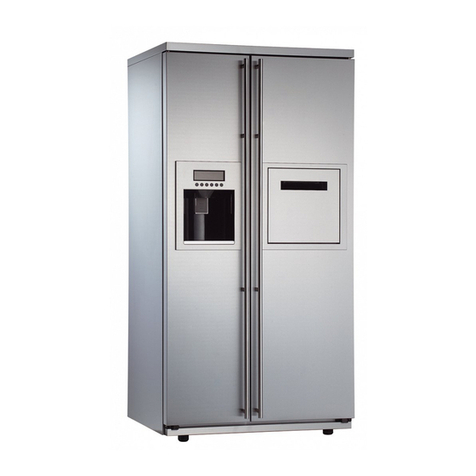
Atag
Atag KA2011LQ User manual
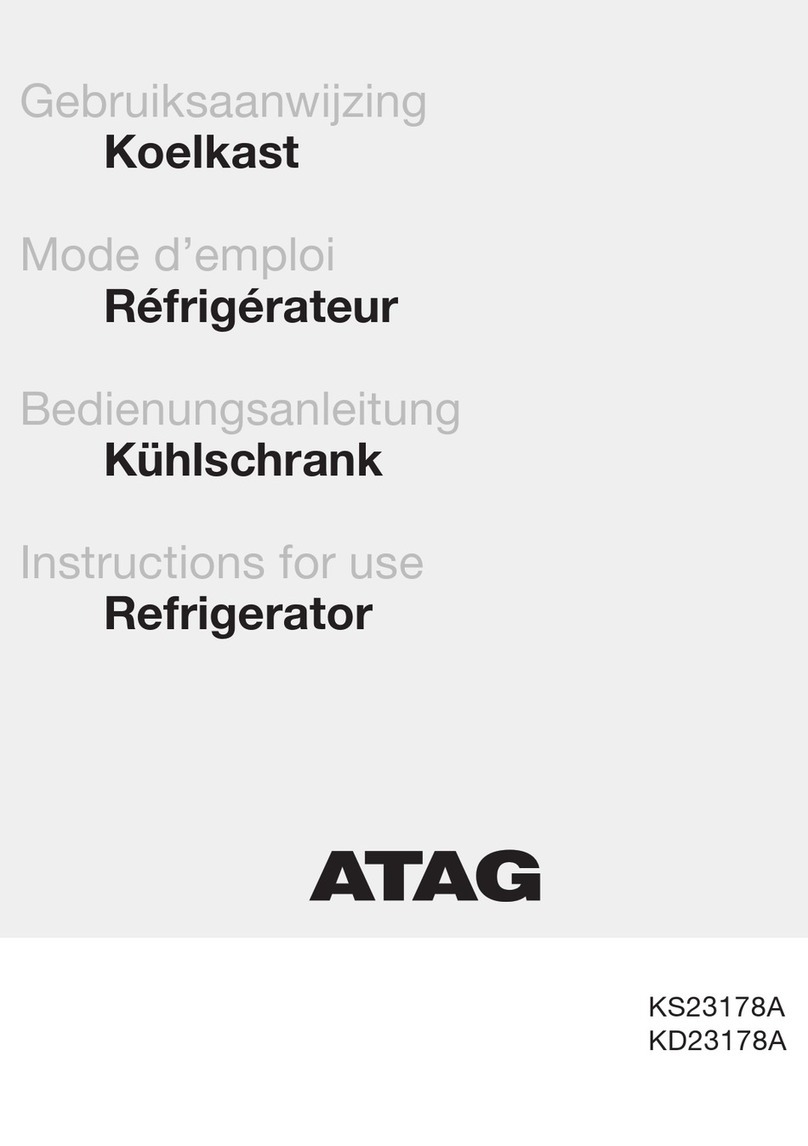
Atag
Atag KS23178A User manual
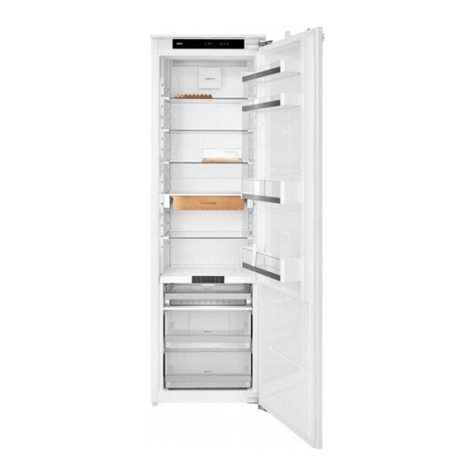
Atag
Atag KD85178AF User manual

Atag
Atag KA2512AD User manual
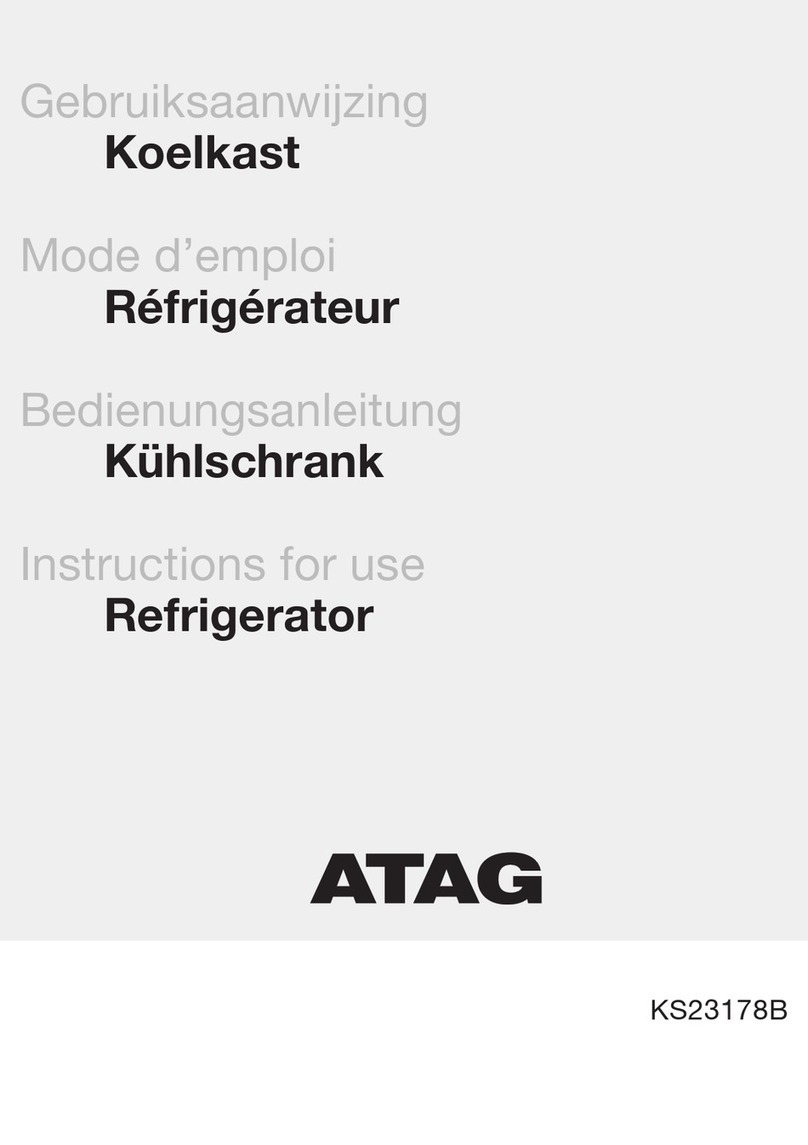
Atag
Atag KS23178B User manual
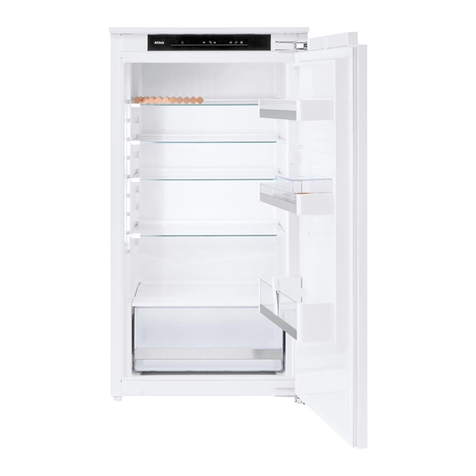
Atag
Atag KD85102AD User manual
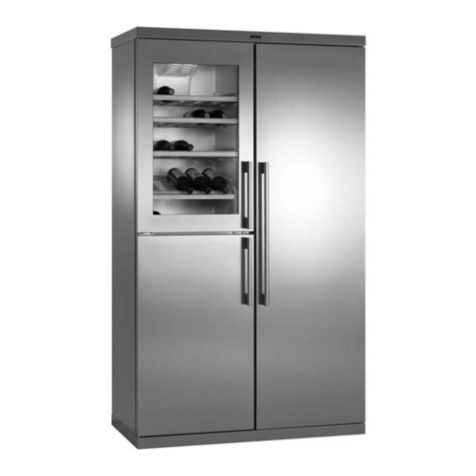
Atag
Atag KA2411R/A02 User manual
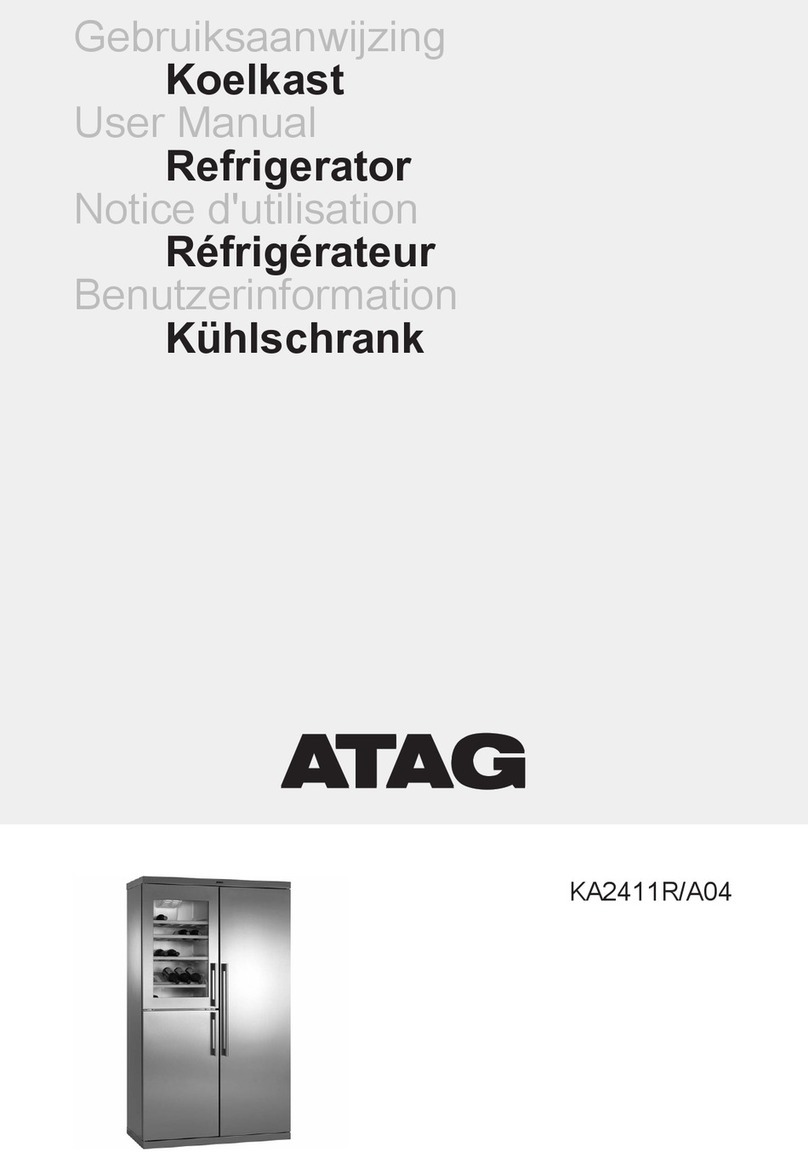
Atag
Atag KA2411R/A04 User manual
